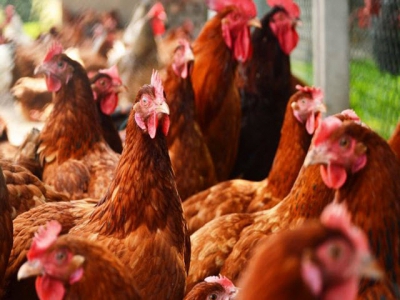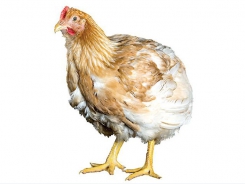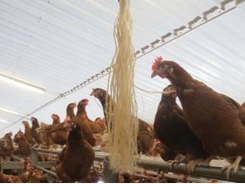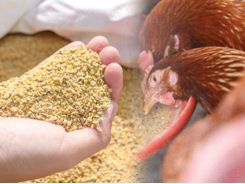Sydney study links feed factors to feather pecking

Several factors identified in incidence of feather pecking by free-range hens.
Dietary form and levels of protein and key minerals have been identified as important factors in the incidence of feather pecking by free-range hens in an Australian study.
Researchers at the University of Sydney’s Faculty of Veterinary Science conducted an online survey of 15 free-range layer farms to gain an overview of the level of feather pecking in Australian flocks, and identify any predisposing factors to this injurious behavior.
On all but one of the farms, some level of plumage damage linked to feather pecking was observed, reported E.H. Au and M. Singh at this year’s Australian Poultry Science Symposium (APSS).
On average, 33 percent of hens had feather damage, and tail plumage was involved in about 70 percent of these cases. Lower prevalence was noted for other body parts: back (36 percent), neck (34 percent), cloaca (27 percent), breast (20 percent) and wing (12 percent).
The Sydney study identified several links between plumage damage and feeding factors, pointing to the possibility of reducing feather pecking through nutritional changes.
Confirming previous studies in the United Kingdom, it appeared that plumage damage was more likely to be associated with the feeding of pelleted diets than mash/meal. Of the Australian farms surveyed, 40 percent fed laying hens with pellets.
Lowest scores for plumage damage were seen on farms where the diet contained 15-16 percent crude protein. Higher or lower levels of protein appeared to exacerbate feather pecking.
Diets higher in gross energy were also linked to more plumage damage, although there was no association between metabolizable energy and feather score.
The Sydney-based researchers found there was more damage to feathering when the dietary levels of calcium, phosphorus and sodium were outside the respective recommended ranges. For calcium, none of the farms was using a diet analyzed to contain a level within the recommended range of 4.2 to 4.6 percent. Some of the levels of phosphorus and sodium analyzed in the feed also lay outside the recommended ranges of 0.3-0.5 percent and 0.15-0.17 percent, respectively.
“Nutritional deficiencies had a stimulating effect of activity and exploratory behavior leading to plumage damage,” concluded Au and Singh.
They suggested that when diets contain an excessive quantities of one or more nutrients, the birds require less time to meet their requirement. They may use this time “gained” for misdirected feed-related activity, such as feather pecking.
A recent article on the nutrition of laying hens includes calcium nutrition and feather pecking (picking) among the 12 perennial points of anxiety for nutritionists formulating diets for these birds. For calcium, understanding the daily cycle of this mineral within the bird is key to getting the appropriate dietary level. While caged layer may begin feather pecking out of boredom and (or) lack of space, attention to mineral and amino acid profiles in cage-free birds could identify whether the behavior can be corrected through adjustment to feeding or management practices.
Related news
Tools

Phối trộn thức ăn chăn nuôi

Pha dung dịch thủy canh

Định mức cho tôm ăn

Phối trộn phân bón NPK

Xác định tỷ lệ tôm sống

Chuyển đổi đơn vị phân bón

Xác định công suất sục khí

Chuyển đổi đơn vị tôm

Tính diện tích nhà kính

Tính thể tích ao




 Enriching free range chickens and reducing feather pecking
Enriching free range chickens and reducing feather pecking  How breeder management impacts broiler performance
How breeder management impacts broiler performance